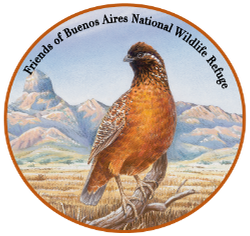Essays
Check out the nature essays! A new "Among Friends" topic will appear every three weeks!
Wild Wednesday 14 April 2021 Hedgehogs
by Walt Anderson I’ve always been fascinated by hedgehogs, but since the mammal is not native to Arizona, I can’t write a column on them. So I decided to get Cereus—Echinocereus, that is—the spiny hedgehog cacti that are found in various species all over the state. A rose by any name . . . well,…
Read MoreAmong Friends 7 April 2021, Great Horned Owls
by Walt Anderson The Great Horned Owl, justifiably called the “Tiger of the Night,” is found throughout North America and more than half of South America. In Arizona, it occurs from as low as 27’ near Yuma to 9800’ in the White Mountains, avoiding only the densest of forests and the most open of habitats.…
Read MoreWild Wednesday 31 March 2021, Bunnies
by Walt Anderson As Easter approaches, the abundant purveyors of consumption have been targeting buyers with all sorts of items, many of them associated with the Easter Bunny. How this mythical creature got associated with the Biblical Easter holiday seems like a stretch to me. And I hate to burst any balloons, but the Easter…
Read MoreWild Wednesday 24 March 2021, Rallids
by Walt Anderson My recent post on Wood Ducks featured one of the most beautiful of the waterfowl, though the entire family has many devoted fans, except perhaps the golfers who hate geese on the fairways. In contrast to the popular Anatidae, the Rallidae (rails, coots, gallinules) may be the Rodney Dangerfields of the water…
Read MoreAmong Friends 17 March 2021 Wood Ducks
by Walt Anderson OK, I admit it. I’m a Duck Fan (Go Oregon!). But when it comes down to choosing favorites, the colorful, extravagant Wood Duck ranks right up there. These beautiful birds are not common in Arizona; in fact, the Breeding Bird Atlas published in 2005 only had nesting records from Yavapai County, specifically…
Read MoreENDANGERED SPECIES: Pima pineapple cactus
by Ricardo Small Several transplanted Pima pineapple cacti are in the cactus garden at the Buenos Aires National Wildlife Refuge Visitors’ Center. This species was classified “endangered” almost 30 years ago (September 23, 1993). The yellow flowers are beautiful. Distribution in Arizona is limited to portions of Pima & Santa Cruz Counties. Its habitat is…
Read MoreAmong Friends 10 March 2021, Redwings
by Walt Anderson A visitor to most Arizona marshes such as at Arivaca Cienega in early March is often greeted with a rich, vibrant chorus of sounds like a warming-up orchestra consisting of violins and flutes but no deep brass. The instrumentalists are indeed warming up, psyching themselves for their upcoming journeys, short or long,…
Read MoreAmong Friends. 3 March 2021, Anna’s Hummingbird
by Walt Anderson Like so many Arizona residents, the Anna’s Hummingbird came here first from southern California and decided to stay. The first newcomer to put down rootlets here nested in the Yuma area in 1962. Since then, it has spread widely in the state, especially common in residential areas with good flower beds and/or…
Read MoreAmong Friends 24 February 2021, Cactus Wren
by Walt Anderson There is nothing understated about the Cactus Wren; perhaps that’s why it’s Arizona’s State Bird! It’s often stated that it is brash, bold, and brazen; it truly makes a statement whenever it’s around with its rrar rrar rrar call like the delayed starter of an old car, as we oldtimers can remember.…
Read MoreWild Wednesday 24 February 2021. Light
by Walt Anderson The Granite Dells is a sensational landscape at any scale, but the job of a serious photographer is to see such a place in a new light. In mid-day without a cloud in the sky, it becomes a bit challenging to find a subject that isn’t too contrasty, too flat, too “ordinary.”…
Read More